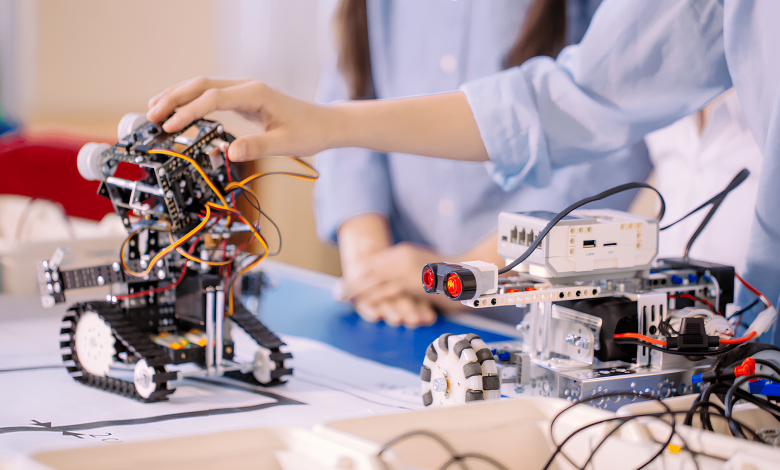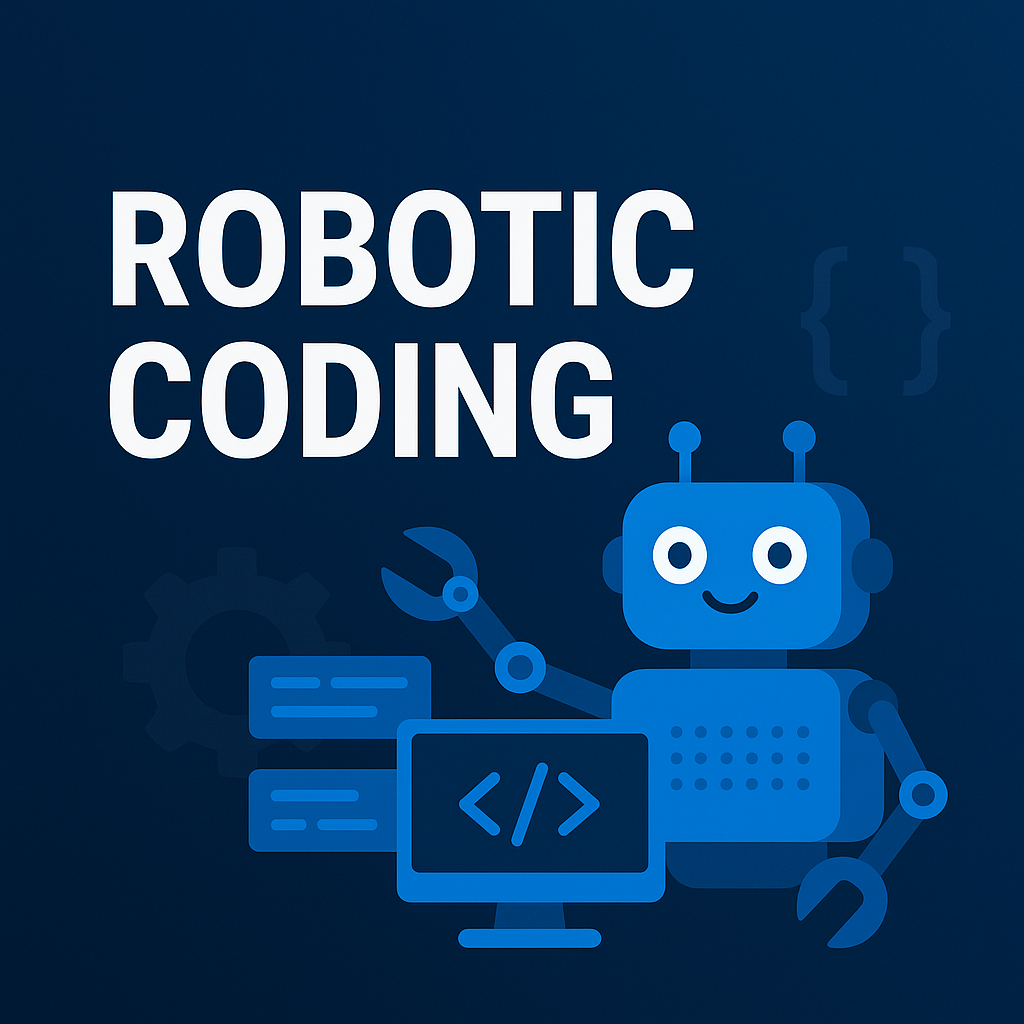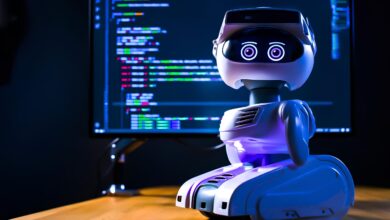What Is Robotic Coding?

Robotic Coding
Have you ever wondered why so many schools are suddenly focusing on robotic coding? The truth is simple: our world is run by technology, and coding is its language. Without understanding how to communicate with machines, kids risk falling behind in a future shaped by automation, artificial intelligence, and robotics. Parents and educators alike now face the same challenge—how to prepare children for a digital-first society. Robotic coding offers an answer. By combining creativity, problem-solving, and technical skills, it builds the foundation for lifelong success.What Is Robotic Coding?
Robotic coding is the practice of programming robots to perform specific actions using computer code. At its core, it combines two major disciplines: robotics (building machines that interact with the world) and coding (writing instructions to make machines act). Unlike abstract coding lessons that take place only on a screen, robotic coding provides hands-on learning. Students write code, upload it to a robot, and instantly see how their instructions translate into real-world actions—whether it’s moving forward, avoiding obstacles, or performing a task like lifting an object.
This interactive learning style makes robotic coding more engaging than traditional programming. For children, it transforms learning into play. Instead of memorizing dry syntax, they learn by experimenting: “What happens if I change this number?” or “Can I make the robot dance?” This curiosity-driven exploration makes robotic coding one of the most effective ways to teach computer science concepts from an early age.
The Importance of Robotic Coding for Children
Why should kids learn robotic coding? The benefits go far beyond building cute robots. It nurtures skills that are essential in the 21st century:
- Problem-Solving: Every bug in code is a puzzle. Children learn patience and persistence while debugging.
- Logical Thinking: Robots only follow exact instructions, which teaches kids to think step by step.
- Creativity: Designing unique robot behaviors sparks imagination and innovation.
- Collaboration: Many robotic coding projects are team-based, improving communication and teamwork.
Perhaps most importantly, robotic coding makes abstract concepts tangible. For example, instead of reading about loops and conditionals, kids see them in action as their robot spins in a circle or stops when it detects an obstacle. This makes coding less intimidating and more accessible, even for those who don’t consider themselves “tech-savvy.”
Robotic Coding in Schools

Schools worldwide are integrating robotic coding into their curriculums. In some cases, it is taught as part of science, technology, engineering, and mathematics (STEM) education. In others, it is offered through after-school clubs or competitions. Programs like FIRST LEGO League or VEX Robotics Competitions encourage students to apply coding skills in creative, real-world challenges.
Teachers report that students become more engaged when coding is tied to robotics. Instead of passively watching lectures, children interact directly with technology, fostering active participation. Additionally, robotic coding bridges subjects: it teaches math through measurements, physics through motion, and engineering through robot design.
Governments and educational institutions see robotic coding not only as a tool for learning but also as an investment in the workforce of tomorrow. Countries that prioritize coding education aim to produce future engineers, scientists, and innovators ready for the demands of a digital economy.
Tools and Platforms for Teaching Robotic Coding
Learning robotic coding is easier than ever thanks to accessible tools and platforms designed for all ages. Some of the most popular include:
- LEGO Education Kits: Designed for children as young as six, they combine block-based coding with creative building.
- Arduino: A microcontroller platform ideal for older students who want to dive deeper into electronics and programming.
- Raspberry Pi: A small, affordable computer that allows students to program robots with Python and explore more advanced concepts.
- Scratch + Robotics Extensions: A drag-and-drop coding interface that helps beginners connect with robots in a simple, visual way.
These platforms are intentionally designed to grow with learners. A child might start with simple block-based coding, progress to Python or C++, and eventually design complex autonomous robots. This gradual learning curve keeps students challenged without overwhelming them.
Robotic Coding and STEM Education
STEM education (Science, Technology, Engineering, Mathematics) is a global priority, and robotic coding lies at its heart. By merging coding with real-world robotics, students develop both technical knowledge and critical thinking.
For example, when programming a robot to follow a line, students apply principles of physics (motion and friction), engineering (sensor placement), and mathematics (angles, distances, calculations). Robotic coding is not just about building robots—it’s about integrating multiple disciplines into a single engaging activity.
The cross-disciplinary nature of robotic coding also prepares students for careers that demand versatility. Today’s problems rarely fit neatly into one subject, and neither does robotic coding. It teaches adaptability, a skill increasingly valued by employers in every industry.
The Future of Careers and Robotic Coding
In the coming decades, automation will reshape industries ranging from healthcare to manufacturing. Robots will play central roles in surgery, agriculture, logistics, and even daily household tasks. This creates a growing demand for professionals who can design, program, and maintain robotic systems.
Robotic coding equips children with the skills to thrive in this environment. A student who learns coding through robotics today may become tomorrow’s AI engineer, autonomous vehicle developer, or medical robotics specialist. Even for those who don’t pursue tech careers, the problem-solving and logical skills learned from robotic coding will remain valuable in any field.
In essence, robotic coding is not only about building robots—it’s about building futures. By teaching children to control technology, we empower them to become innovators rather than passive users of machines.
1. What age is best to start learning robotic coding?
Children as young as 6 can begin with block-based coding platforms like LEGO Education, while older students can transition to Python or C++.
2. Do you need advanced math to learn robotic coding?
No. Basic math skills are enough for beginners, and concepts are introduced gradually as students progress.
3. Can robotic coding be learned at home?
Absolutely! Many kits and online courses make it possible to learn from home with minimal equipment.
4. Is robotic coding only for kids who want to become engineers?
Not at all. While it’s great preparation for engineering, the skills gained—problem-solving, creativity, and teamwork—are valuable in any career.
5. How long does it take to learn robotic coding?
It depends on the learner’s age and dedication. Some children master basics within weeks, while advanced projects may take months of practice.
